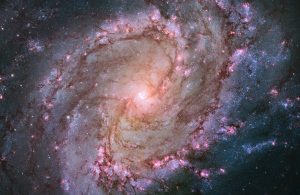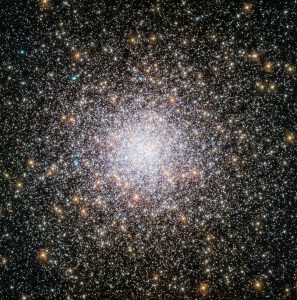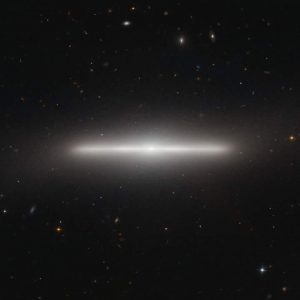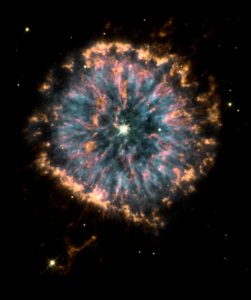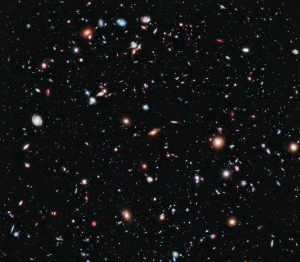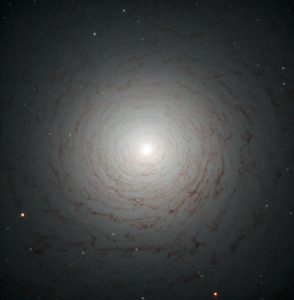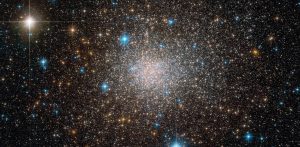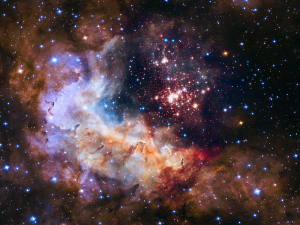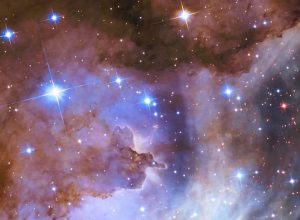telescopio Hubble
Genesi Stellare nella Girandola del Sud
La bellezza della galassia a spirale barrata Messier 83 è svelata in tutta la sua gloria in questa immagine del telescopio Hubble. Le vivaci tonalità magenta e blu rivelano che la galassia risplende di formazione stellare. Conosciuta anche come Girandola del Sud, si trova a 15 milioni di anni luce di distanza nella costellazione dell’Idra. Continua a leggere
La Giovinezza di NGC 362
Gli ammassi globulari offrono una delle visioni più spettacolari nel cielo notturno. Queste sfere adorne di astri contengono centinaia di migliaia di stelle, e risiedono nelle periferie delle galassie. La Via Lattea ne contiene più di 150 e quello mostrato in questa nuova immagine del telescopio Hubble, chiamato NGC 362, è uno dei più inusuali. Continua a leggere
Una Galassia Straordinariamente Sottile
Questa sorprendente galassia, chiamata NGC 4452, appare esattamente di taglio se osservata dalla Terra, permettendoci di ammirare una straordinaria immagine di miliardi di stelle viste da un’insolita angolazione. Continua a leggere
L’occhio ardente di NGC 6751
Questa immagine ripresa dal telescopio Hubble dimostra lo straordinario spettacolo offerto dalle nebulose planetarie. Questa in particolare, chiamata NGC 6751, è simile ad un gigantesco occhio infuocato. Si tratta di una nube di gas espulso diverse migliaia di anni fa dalla calda stella visibile nel centro. Continua a leggere
Hubble eXtreme Deep Field
Questa immagine, denominata Hubble eXtreme Deep Field (XDF), combina osservazioni di Hubble di una piccola porzione di cielo nella costellazione della Fornace. Continua a leggere
ALMA Esplora il Campo Ultra-profondo di Hubble
Gli astronomi hanno utilizzato l’Atacama Large Millimeter/submillimeter Array (ALMA) per esplorare gli angoli più remoti dell’Universo rivelati per la prima volta nell’immagine iconica del Campo Ultra-profondo di Hubble (Hubble Ultra Deep Field, HUDF). Continua a leggere
Una misteriosa antica spirale
Questa spettrale immagine ripresa dal telescopio Hubble rivela l’impressionante centro della galassia NGC 524. È una galassia di tipo lenticolare, uno stadio intermedio nell’evoluzione galattica tra le ellittiche e le galassie a spirale; si trova nella costellazione dei Pesci, a circa 90 milioni di anni luce dalla Terra. Continua a leggere
Un raro resto fossile di una Via Lattea primordiale
Un team internazionale di astronomi ha scoperto un resto fossile di una primordiale Via Lattea, al cui interno si trovano stelle di età molto differenti. Questo sistema stellare, Terzan 5, a 19.000 anni luce di distanza dalla Terra, ricorda un ammasso globulare, ma è diverso dagli altri ammassi globulari conosciuti. Continua a leggere
Fuochi d’artificio cosmici: Westerlund 2
Questo scintillante panorama di giovani stelle nascenti assomiglia ad uno spettacolo pirotecnico estivo nell’immagine del telescopio Hubble, rilasciata per celebrare un quarto di secolo di esplorazione dello spazio a partire dal suo lancio il 24 aprile del 1990. Continua a leggere
Stelle come diamanti in Gum 29
Questa immagine mostra la regione di formazione stellare Gum 29 che circonda l’ammasso Westerlund 2. Si tratta di una sezione della famosa immagine dell’ammasso stellare e dei suoi dintorni, ripresa da Hubble e rilasciata per celebrare il 25° anniversario del telescopio. Continua a leggere
